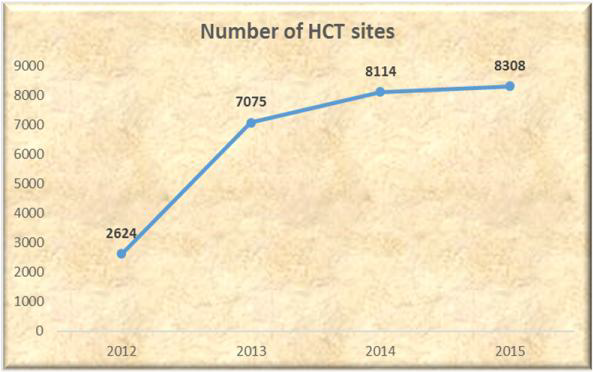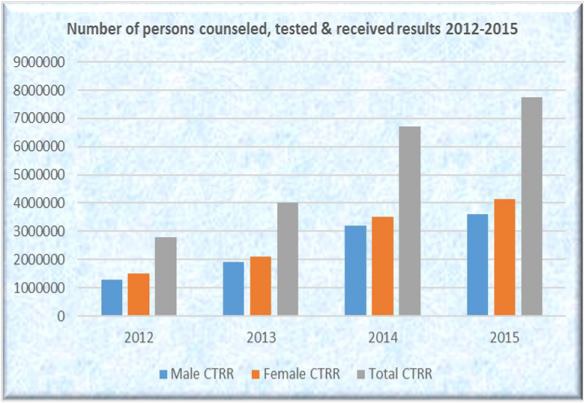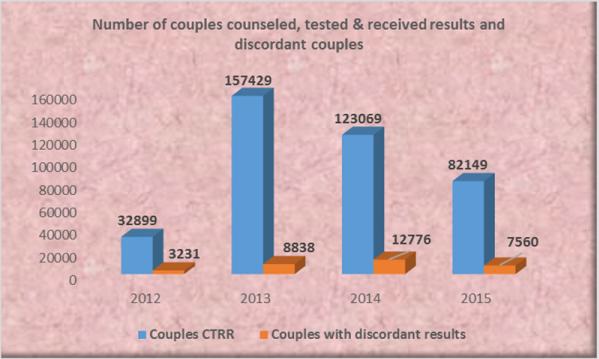Blog
Publications
Fact Sheet: HIV Counseling and Testing (HCT) 2016


- HCT is the entry point for HIV/AIDS prevention, treatment and care services
- 77% of the general population desired to obtain an HIV test. – NARHS 2012
- Only 26.3% of the general population in Nigeria have ever been tested for HIV with more
- females (29.2%) than males (23.5%) ever tested for HIV. – NARHS 2012
- More of the general population living in urban (33.1%) areas compared to those in rural
- (22.6%) areas have ever tested for HIV.
- Proportion of persons ever tested among key populations is higher than those who have ever tested for HIV in the general population. 88% Brothel Based Female sex workers (BBFSW),
- 75% non-brothel based female sex workers and 65% of Men who have sex with men (MSM) respectively have ever tested for HIV- IBBSS 2014
- The HCT program in Nigeria is guided by the 2011 national guidelines on HIV counselling and testing
- The 2011 national HCT guidelines recommends three models for delivering HCT: Standalone, Integrated Health facility and Mobile/Outreach models respectively.
NATIONAL HCT TARGETS (2011-2016)
- At least 80% of adults access HCT services in an equitable and sustainable manner by 2015.
- At least 80% of Female sex workers access HCT by 2015
- At least 80% of Men who have sex with Men access HCT by 2015
Source: NSP 2010-2015

- Number of health facilities that provide HCT services has increased almost fourfold since 2012.
- The number of persons who were counselled, tested and received results also increased almost four fold between 2012 and 2015
- The total number of persons who obtained HCT in 2015 was 7,738,594b compared to 2,792,611 persons in 2012
- Collectively the 12 plus one high burden states accounted for 53.9% (4,171,988) of the total number of persons who received HCT in 2015.
- Oyo state (666,900) and Benue state (552,665) reported the highest number of persons who were counseled, tested and received their results


- The significant increase in number of persons accessing HCT can be attributed to increased HCT community outreach activities in the country since 2014,
- The number of men accessing HCT services has been on the rise even though the number of women accessing HCT is still higher than that of the men.
- The most recent survey findings show that only 36% in the general population (NARHS, 2012) obtained a HIV test in the last 12 months preceding the survey compared to 86% of BBFSW(IBBSS, 2014).
- The number of couples who were counselled tested and received results has been on the decrease. However, the proportion of discordant couples dropped from 10% in 2014 to 9% in 2015.
Conclusion
HIV counselling and testing is important because it avails more people the opportunity to know their HIV status thus boosting coverage for HIV treatment and care programs as well as PMTCT for eligible persons.
The proportion of those who have ever been tested for HIV is highest among key populations perhaps because they perceive themselves at risk of HIV infection unlike the general population who either perceive themselves not at risk or less at risk.
Increased awareness and demand creation on the benefits of HCT for the general population is thus needed. Multi disease outreaches that integrate HCT have proved successful in increasing the number of persons reached with HCT in the last two years and should be intensified especially so as to achieve greater coverage for HIV testing among the general population.
Establishing, maintaining and strengthening linkages is also vital to ensuring that those who are in need of treatment and care receive the services is very important.
